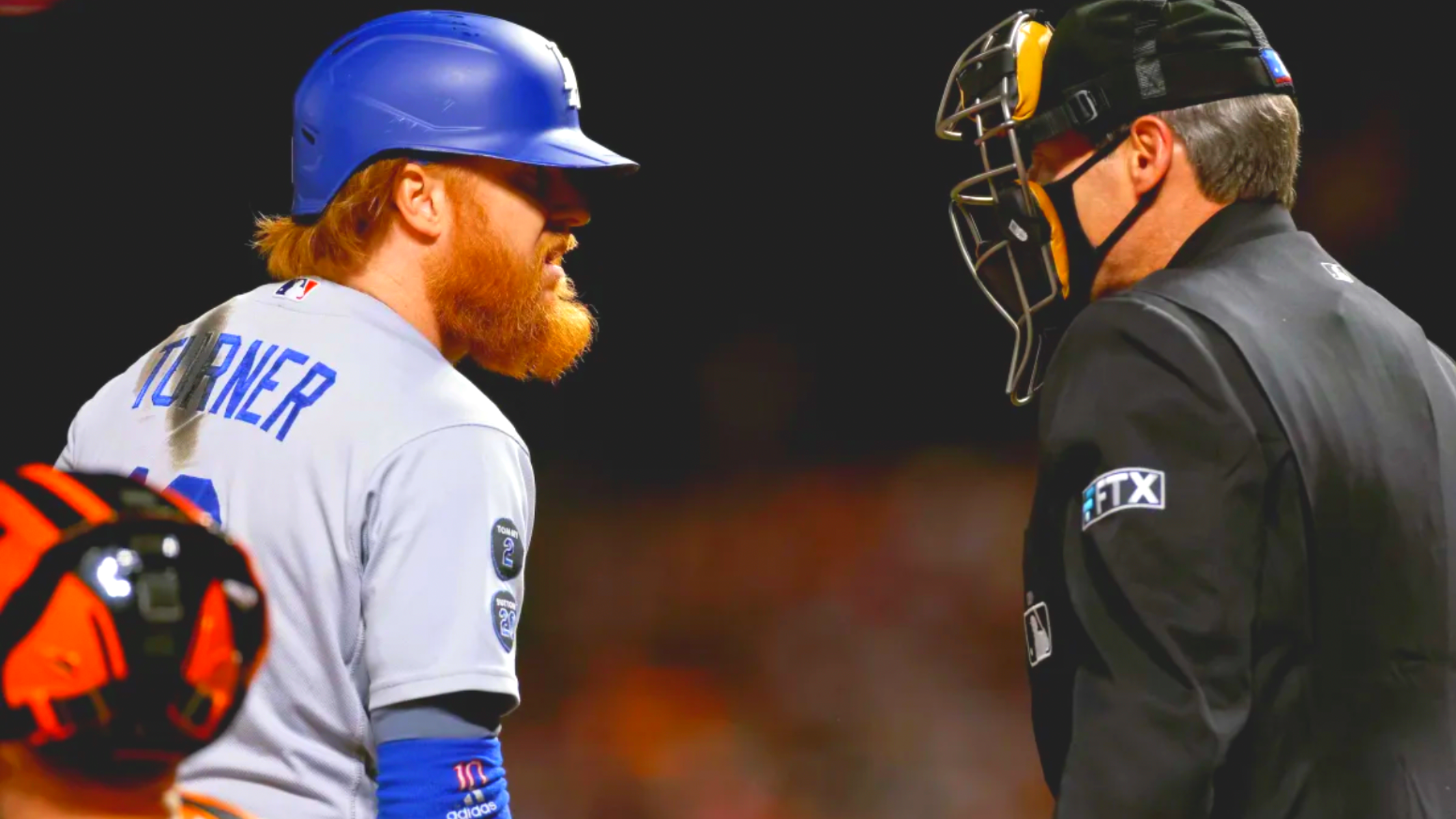Best Offensive Team vs. Best Defensive Team in Women's College Volleyball: Who Should Win?
By Grace Qian | October 17, 2022

Right after the NCAA Women's D1 Volleyball Tournament for the 2022 Fall Season began, NCAA reporter and host Michelle Chester put together a list of the top 10 teams in US Women's Collegiate volleyball. The top two teams were the Texas Longhorns and the Nebraska Cornhuskers, number 1 and number 2 respectively. The Texas Longhorns are not only undefeated, but they are taking down top-notch teams and have a strong non-conference schedule. They are commonly referred to as the “Best Offensive Team in the Nation”. In contrast, the only reason the Nebraska Cornhuskers are below Texas is because of strength of schedule and quality wins so far. (They also lost to Stanford, one of the other top 10 teams). The Cornhuskers are commonly referred to as the “Best Defensive Team in the Nation”. While Texas and Nebraska will only meet this year in the playoffs, here's my prediction for who will win.
Offense - Team
Looking at the offensive statistics for both teams, it is apparent that both teams are well-matched. Both teams average around 14.1 kills per set and make relatively the same total number of errors and kills. However, Texas’ all-around hitting percentage is higher than Nebraska, and Nebraska has had more attempts. Additionally, having a whopping 0.318 kill percentage puts Texas on top of Nebraska regarding offense.
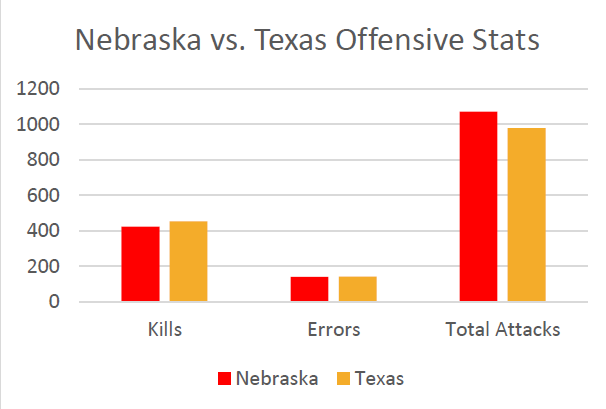
Offense - Individual
Interestingly, looking at individual players on both teams, it is evident that Nebraska has a star stand-out in Whitney Lauenstein. Just a sophomore, this native Nebraskan has the highest hitting percentage (0.325) on her team. Lauenstein and “Super Senior” Madi Kubik lead in the total kills on their team.
Logan Eggleston and Madisen Skinner also hit high percentages with more than 0.250. Eggleston leads out of all of these outside hitters with 135 total kills. Like Kubik, she is also a “Super Senior”. “Super Senior” is a term given to players who decided to play one more season due to the COVID-19 Pandemic.
Meanwhile, on the Longhorns’ team, middle blocker Asjia O’Neal is hitting high numbers as well, with a whopping 0.410. As a redshirt senior, she is the most experienced out of all the middle blockers on both the Texas and Nebraska teams.
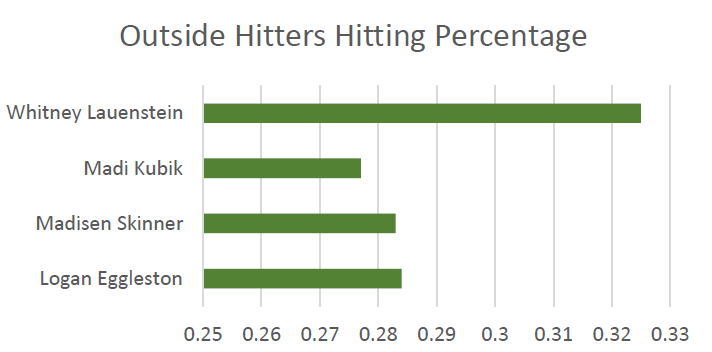

Clearly, the Texas Longhorns certainly live up to their moniker as “Best Offensive Team in the Nation”, hitting above 0.300 as a team. However, Nebraska is not far behind in terms of kills, and both teams score the same number of kills per set.
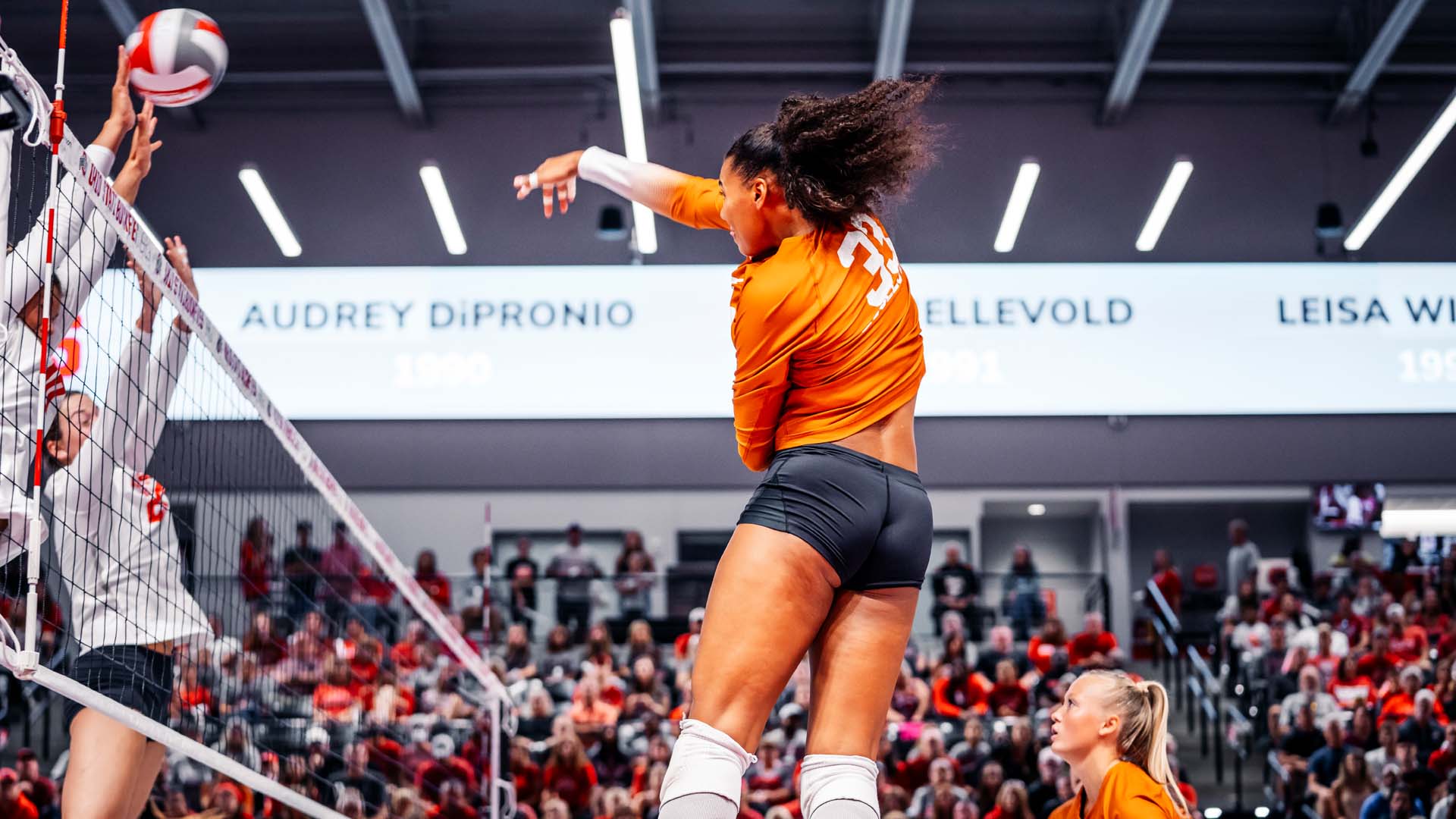
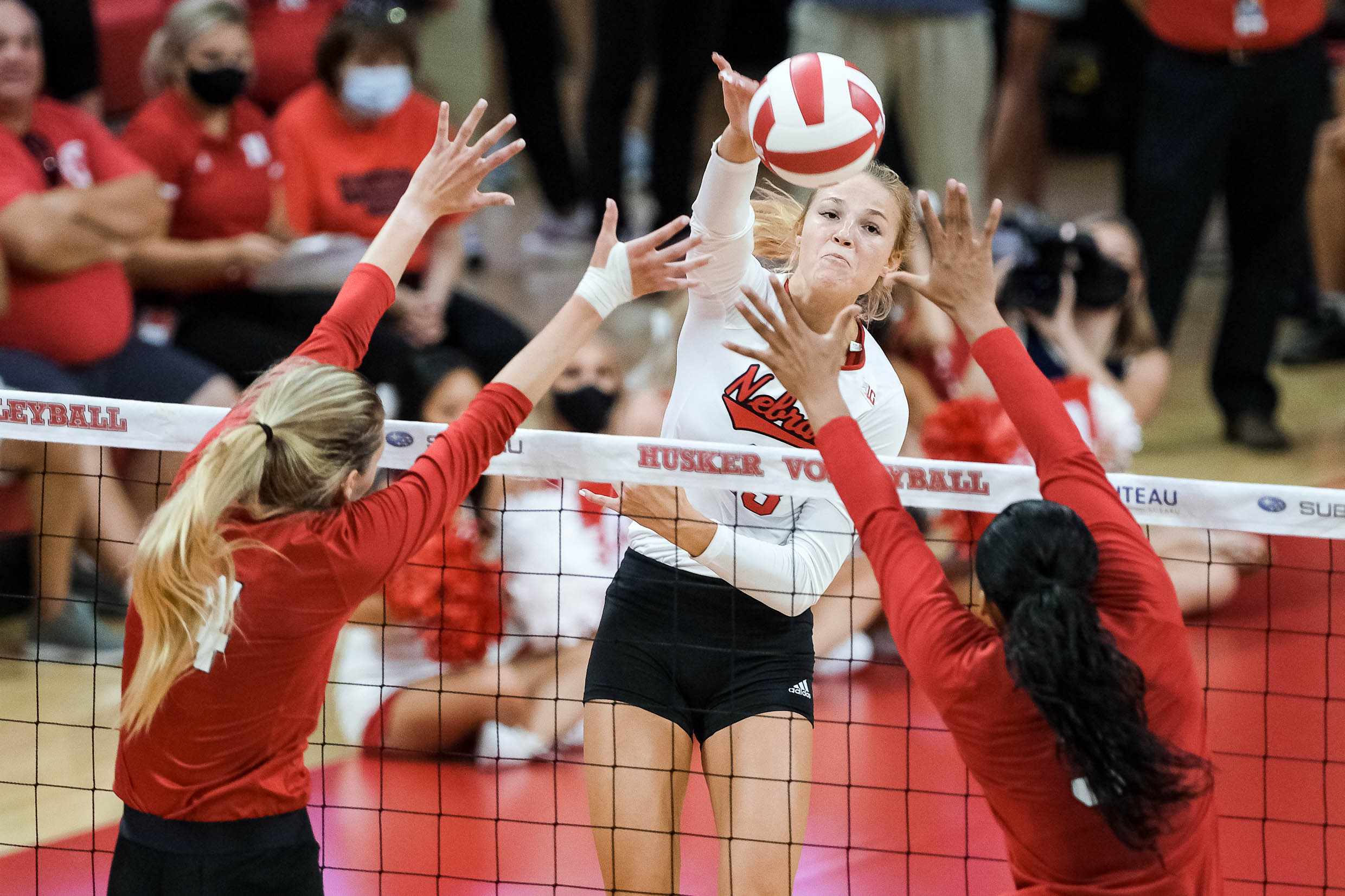
Defense - Team
In terms of defense, the Cornhuskers lead in the number of digs, as well as in total number of blocks. In volleyball, the block is often referred to as the “first line of defense” since it is the first chance to defend against the opposing team’s attack. Nebraska also accumulated more digs per set (Nebraska – 16.1, Texas – 13.4), as well as blocks per set (Nebraska – 2.7, Texas – 2). Nebraska also had less blocking errors (9) than Texas (11).
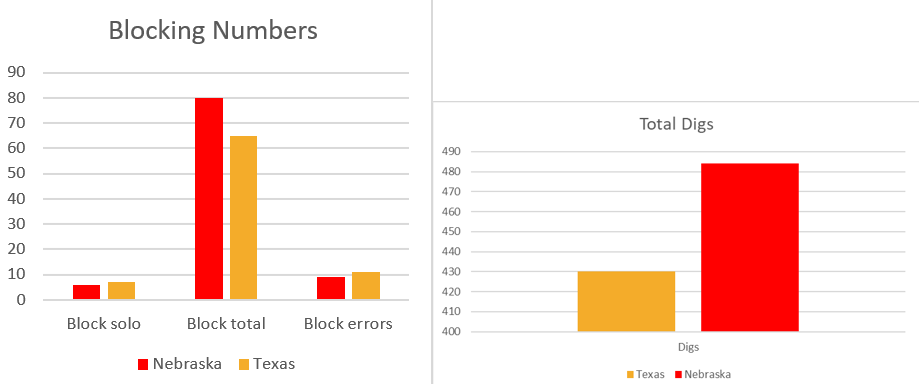
Battle of the Liberos
Part of the reason for Texas’s number one position is also because of their UCLA transfer libero Zoe Fleck. An experienced senior, Fleck was named two-time Pac-12 Libero of the Year and an All-American selection. In the 2021 season, she helped lead UCLA to a second-place finish in the Pac-12.
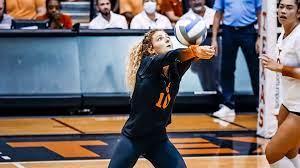
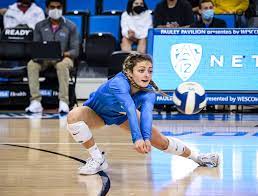
Meanwhile, Nebraska’s defense is home to Lexi Rodriguez. Last year, Rodriguez was Big Ten Defensive Player of the Year (2021) – she was just a freshman. She was also awarded AVCA National Freshman of the Year (2021). One specialty of Rodriguez is her assists – she is the second leader in assists (after setter Nicklin Hames).
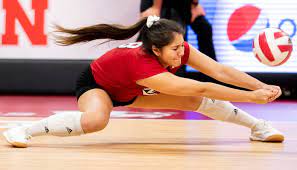
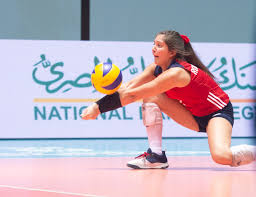
Looking at the statistics, it appears that Fleck has more total digs and digs per set than Rodriguez. However, one also must look at Nebraska’s rotation– beside Rodriguez in the back row is defensive specialist and outside hitter Kenzie Knuckles. Formerly Nebraska’s libero, Knuckles stepped up in her role as a backrow outside hitter, providing another offensive option for her team.
Looking at the statistics, it appears that Fleck has more total digs and digs per set than Rodriguez. However, one also must look at Nebraska’s rotation– beside Rodriguez in the back row is defensive specialist and outside hitter Kenzie Knuckles. Formerly Nebraska’s libero, Knuckles stepped up in her role as a backrow outside hitter, providing another offensive option for her team.
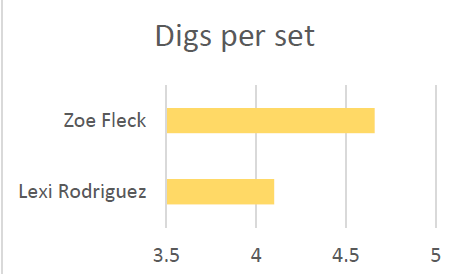
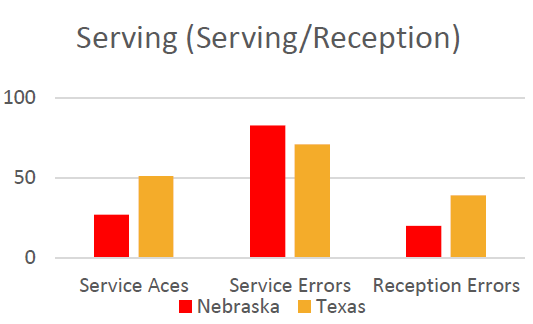
Serving (Serving/Reception)
In terms of serving, Texas has more aces and less service errors – they average 1.6 aces per set. However, Nebraska has less reception errors than Texas, only 0.7 reception errors per set. Last year in the 2021 NCAA Division I Playoffs, Nebraska won against Texas because they out-served them and out- passed them. This year, it seems that Nebraska might out-pass Texas, but Texas will retaliate with strong serves.
Case-in-Point: Last Three Championships
A popular quote is “Offense wins seasons, but defense wins championships”. In volleyball, whenever a top offensive team plays against a top defensive team, the team with the better defense typically wins. However, if either the defensive stats or the offensive stats for both teams are relatively the same, then the smaller details matter more (serving, blocks, errors).
Looking at last year’s championship, it was a tight game with 5 sets. No. 4 Wisconsin and No. 10 Nebraska were the top teams in the tournament, and Wisconsin won. Interestingly, both teams were both top ranked defensive teams. As a team, the Badgers posted 24 blocks, the most in a national championship game ever. Lauren Barnes, the libero for Wisconsin, made 31 digs. For Wisconsin, we will see the 2021 AVCA National Player of the Year Dana Rettke. Another interesting note is that both teams hit around the same percentage (Nebraska – 0.222, Wisconsin – 0.291.) In this case, it was a close and exciting game. Either team could have won. However, ultimately, Wisconsin played a slightly better offensive game, resulting in their victory.
In the 2020 NCAA D1 Championships, Kentucky outhit Texas .366 to .233, the ultimate difference maker. The Wildcats won the national championship for the first time in program history and became the first SEC team to win a DI women's volleyball title after beating Texas, 3-1. In this case, because both teams were ranked similarly defensively, the offense mattered more.
In the 2019 Championships, the Stanford Cardinals won with a 3-0 victory over Wisconsin. Stanford was simply better: with libero Morgan Hentz in the back row (named NCAA Libero of the Year 3 years in a row), and outside hitter Kathryn Plummer hitting over 0.500, it was a straight sweep. Defense-wise, Stanford has 37 digs to Wisconsin’s 28. Meanwhile, only one Wisconsin player was hitting above .300. Stanford had four. Wisconsin didn’t stand a chance in this match-up.
Conclusion
Comparing the stats collected on September 18, 2022, it is clear Texas and Nebraska deserve their number one and number two spots respectively. However, I would argue that Nebraska should win in a game against Texas for several reasons:
1) They have spectacular defense with Rodriguez, Hames, and Knuckles and more total blocks; they also have less blocking errors
2) They have fewer serve receive errors (especially important against tough serving teams such as Texas)
3) 4 experienced seniors (two of them are “Super Seniors”), as compared to Texas (3 seniors) – not counting redshirted seniors
4) Offensive weapon arsenals in Whitney Lauenstein and Madi Kubik (one of the “Super Seniors”)
5) Strong leadership from Nicklin Hames, Madi Kubik, and Kenzie Knuckles, all of whom are experienced players





